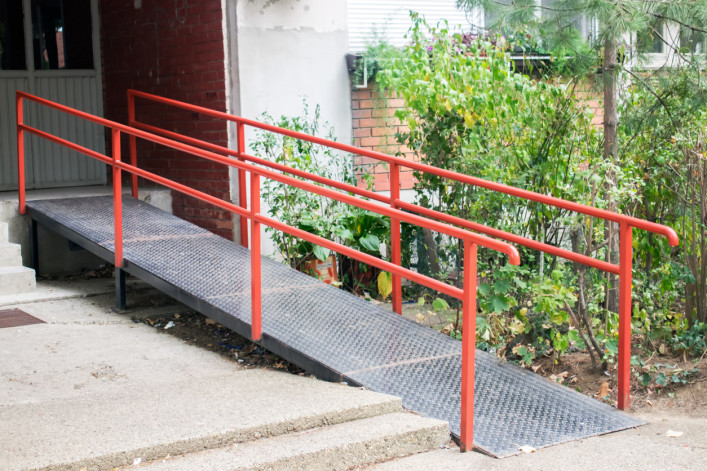Ask Sam: Is my landlord required to install a wheelchair ramp for accessibility?
I live in a rent-stabilized NYC building and one of my neighbors uses a wheelchair. Our building has an elevator, but there's no ramp leading to the front door, where there are a couple of steps. My neighbor always needs help lifting his wheelchair over the steps to get in or out. Is the building required to have a ramp for him, and how would we get one put in?
“It’s a general proposition that if someone is disabled and lives in an apartment building, New York City Human Rights Law requires that their landlord make reasonable accommodations,” says Sam Himmelstein, a lawyer with the firm Himmelstein, McConnell, Gribben, Donoghue & Joseph who represents residential and commercial tenants and tenant associations. “It certainly includes situations like this one,” he says.
Disability is broadly defined under the city’s human rights law, which requires that landlords take action to allow people with disabilities to live in their apartments in the same way as people without disabilities. This can mean building owners must make some structural change to apartments or common spaces, or alter building policies to accommodate a tenant who has a disability.
“Installing a wheelchair ramp would fall under that law as a type of installation the owner is required to undertake at their own expense,” says David Hershey-Webb, a partner at HMGDJ law.
The exception to this law is for accommodations that would cause landlords “undue financial hardship” to make—for example, installing elevators in a walk-up building if a tenant who lives on a high floor becomes disabled. In such a case, the landlord might be required instead to move the tenant to a ground-floor apartment.
“When there’s a dispute, it’s generally about what constitutes a reasonable accommodation, and the person seeking it is not always going to get exactly what they’re asking for,” Hershey-Webb says. “A mobility-impaired person might ideally like to have an elevator, but if the owner instead offers a ground-floor apartment, the human rights commission isn’t going to require them to install an elevator.”
And in rent-stabilized buildings like yours, the landlord could pass on the expense of an accommodation—like the installation of a wheelchair ramp—to the tenants as a major capital improvement.
“What’s helpful is that these increases are now capped at 2 percent of rent, so if your rent is $2,000, the landlord can only collect an additional $40 a month for the first year, and another $40 for the second year,” Hershey-Webb says.
To get a ramp installed, your neighbor should start by approaching the landlord, which he might opt to do with a lawyer to advise him.
“Tenants can approach the landlord on their own or with an attorney and make their request for accommodation, and the landlord is required to enter into a cooperative dialogue with the tenant and work out a resolution,” Hershey-Webb explains.
Tenants could also file a complaint with the NYC Commission on Human Rights to get an accommodation, but it’s better to first try talking to a landlord before going this route.
Related:
Ask Sam: Is it discrimination if my landlord singles me out as needing renter's insurance? (sponsored)
Ask Sam: What is a reduction of services complaint, and when should tenants file one? (sponsored)
Ask Sam: What does the new supermajority in Albany mean for NYC tenants? (sponsored)
Ask Sam: When can tenants legally withhold their rent? (sponsored)
Read all the Ask a Renters' Rights Lawyer columns here.
Sam Himmelstein, Esq. represents NYC tenants and tenant associations in disputes over evictions, rent increases, rental conversions, rent stabilization law, lease buyouts, and many other issues. He is a partner at Himmelstein, McConnell, Gribben, Donoghue & Joseph in Manhattan. To submit a question for this column, click here. To ask about a legal consultation, email Sam or call (212) 349-3000.

























